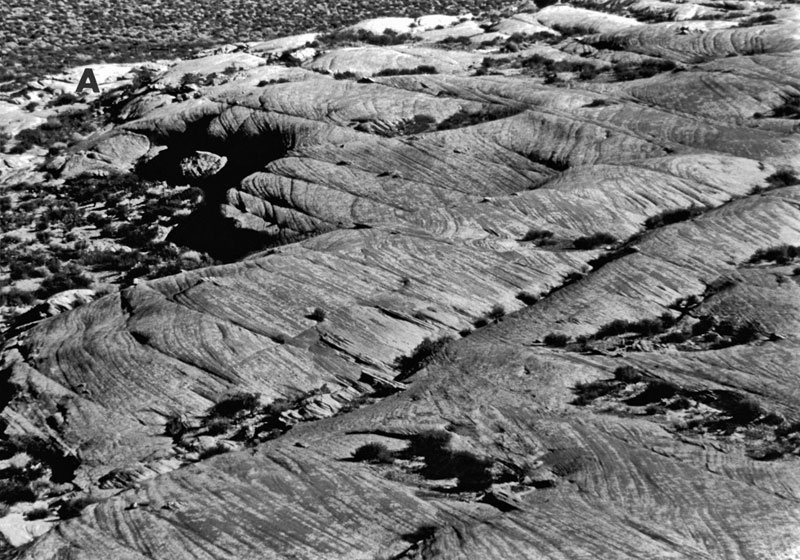Pacific Coastal and Marine Science Center
Bedform Sedimentology Site: “Bedforms and Cross-Bedding in Animation”

FIG. 52a. Structures formed by a large dune with along-crest-migrating superimposed dunes; eolian deposits in the Entrada Sandstone (Jurassic) near Page, Arizona. This is a horizontal section, and Figure 52b shows a vertical section.
RECOGNITION: The bedding is not structurally tilted but is a compound set of cross-beds deposited by an assemblage of bedforms like those illustrated in Figures 46I and M. The main dune that deposited this entire coset was at least 30 m high (the thickness of the preserved coset) and migrated from left to right and away from the viewer. The exact migration direction diverges somewhat from the dip direction of the bounding surfaces (Fig. 46). The superimposed dunes were largely preserved because of locally high rates of deposition on the lee side of the main dune. They were several meters high and migrated from the top left of the photograph toward the lower right, along the advancing lee slope of the main dune. Migration of these superimposed dunes scoured the inclined bounding surfaces and deposited the cross-beds that dip to the right. This structure demonstrates the difficulty of distinguishing the deposits of transverse, oblique, and longitudinal bedforms, because it resembles the structures deposited by relatively transverse bedforms (Fig. 46I) and structures deposited by oblique bedforms (Fig. 46M).